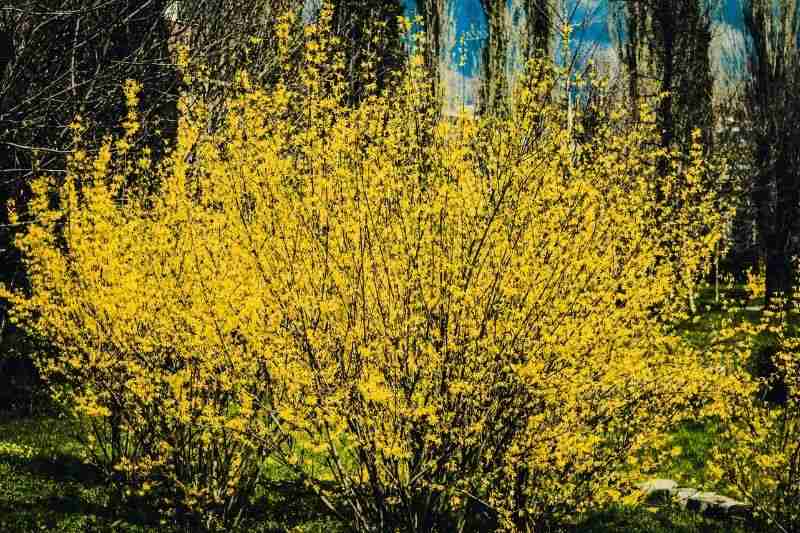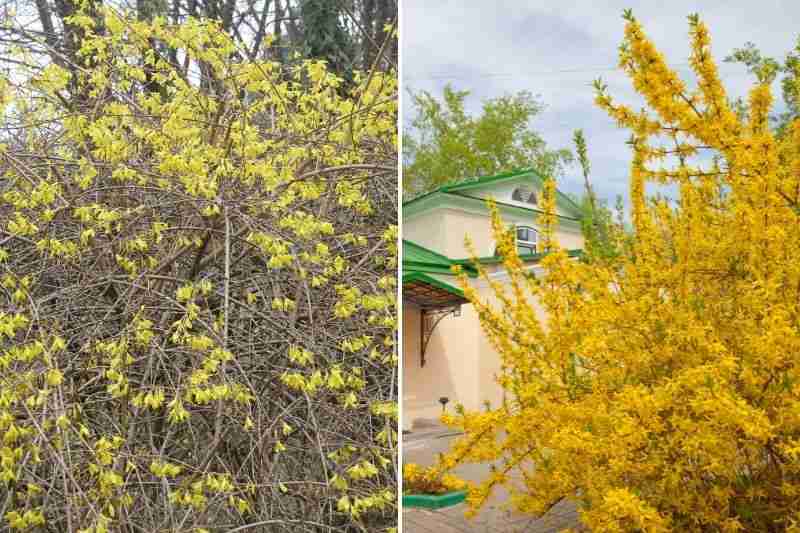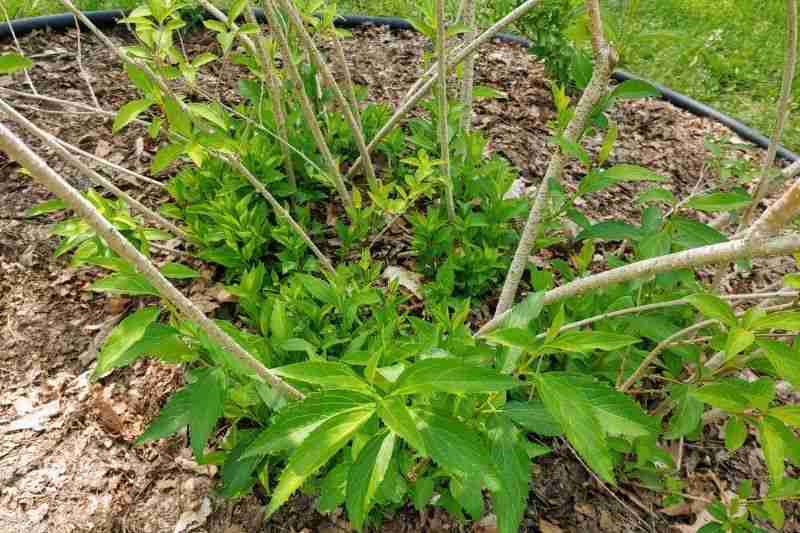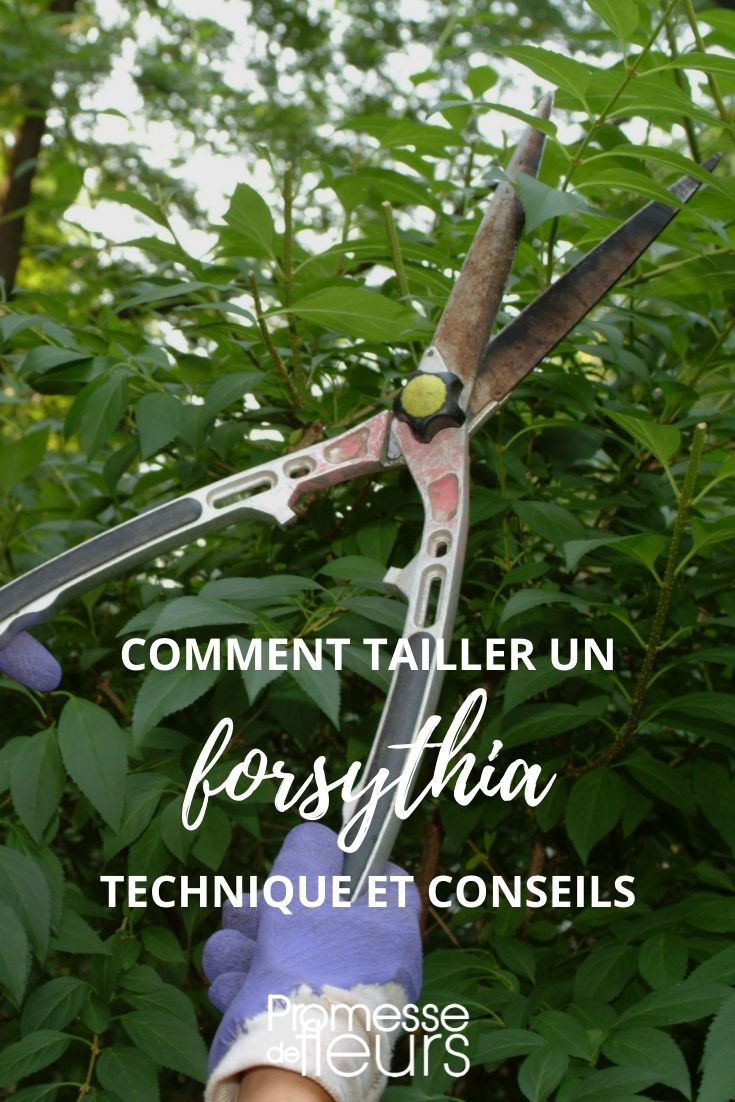Pruning forsythia is not only essential for its healthy development, but it allows it to retain a bushy habit with an attractive, aesthetic shape, vigour and good floriferous display at the start of spring. For this, a maintenance pruning must be carried out at the right time so as not to hinder flowering of this deciduous bush that flowers in spring. Moreover, pruning is not done the same way depending on bush ripeness and its history. Indeed, an ornamental bush neglected for many years needs a rejuvenation pruning to rebalance its silhouette and renew its branching. Find below all our tips to prune forsythia successfully and enjoy its brilliant yellow flowering!

Forsythias with natural silhouette
When to prune forsythia?
Pruning forsythia is not mandatory, but recommended to preserve a well-balanced silhouette. Annual maintenance pruning helps maintain a homogeneous habit for your forsythia and limits its spread.
Prune forsythia within 1 to 2 months after the end of flowering, i.e. from May until mid‑June. Before winter, forsythia forms flower buds on current-year wood. Bud break occurs the following spring, revealing a multitude of yellow flowers. If pruning is carried out in winter, much of the flowering is lost. Also, if pruning is done too late in summer (July/August), the bush will not have time to produce new shoots bearing flower buds before winter. Flowering the following year will then be almost non‑existent.
How to prune forsythia?
Required equipment
To prune forsythia, equip yourself with the following tools :
- A pruning shear
- A pruning saw (for example a Japanese curved‑blade saw)
- A branch cutter (also called heavy‑duty pruning shear or lopper)
- A pair of gloves
Check condition of your pruning tools. Sharpen and disinfect them correctly to obtain clean cuts, promote good wound healing and reduce risk of infection to your forsythia.
Some clarifications
For a young specimen about to be newly planted, perform a light tidying of the aerial parts. Remove dead and weak branches. Shorten diseased or broken branches just above the damaged area. Retained stems are shortened by one third.
Allow your flowering bush to grow freely for two years after planting. If necessary, a simple tidy‑up of dead, thin or tangled stems can be done. From the third year, maintenance pruning can be practised.
Nursery bushes are generally already formed and possess between 5 and 10 main branches. There is therefore no formative pruning to carry out.
Maintenance pruning
- First, remove diseased or broken branches, and dead wood.
- Cut back completely those shoots that have flowered and are too long. Reduce by one third those that have just flowered and are more moderate in length. For this, cut shoots 5 mm–1 cm above a bud (or eye), sloping away from the bud. This prevents rainwater from pooling on the wound created by pruning and running over the bud.
- Eliminate thin branches, too feeble, by cutting them back to their base.
- To improve light penetration to the stump centre, thin out the core of the forsythia by removing branches that cross through the bush’s branches and rub against others. These crossing branches can cause wounds by friction.
- Remove trailing branches that are too close to the soil.
- Finally, dig out suckers that have formed at the base of the bush, as they can needlessly exhaust it.
Once pruning is finished, the bush’s silhouette should be harmonious and regular with branches well distributed.

On left, a forsythia with many tangled shoots producing few flowers. On right, a profusely flowering forsythia thanks to well‑executed pruning.
When to prune an old forsythia?
After a few years (from about 4 years), forsythia tends to flower less. If neglected, it loses its attractive shape by growing too tall and becomes bare at the base. It also becomes more susceptible to disease. Cutting it back will stimulate new shoots and therefore rejuvenate it. This radical pruning helps it regain a more compact, aesthetic form and a more abundant flowering.
Rejuvenation pruning (or coppicing) can be carried out when your plant becomes too large and unsightly, every four to five years and always after flowering. This gives new branches time to form and strengthen before winter. Forsythia may be less floriferous the following spring, but this will recover the year after. In some regions, high spring temperatures can occur; do not prune during hot days.
How to rejuvenate an old forsythia?
Cutting back consists of cutting main structural branches very short. Forsythia tolerates this severe pruning right down to ground level. After such pruning, the bush will produce vigorous new shoots at its base (brown in colour), thanks to numerous dormant buds beneath the bark that will break dormancy.
Rejuvenation pruning
Use a cutting tool (branch cutter or pruning saw) appropriate to branch diameter. As with maintenance pruning, always cut on the slant.
- For a plant aged four/five years, cut back all shoots to about 30–40 cm above the soil.
- For a forsythia over five years old, remove approximately two thirds of the oldest wood at the bush core, cutting close to the stump (large grey branches). When cutting, take care not to damage remaining shoots with your tool. Main branches protruding from the soil will act as "sap‑drawers". They will activate sap circulation and regrowth of new stems.

Pruning stimulates growth of new branches at base of bush (photo sk - Flickr)
Another method: considerate pruning
It is possible to carry out less radical pruning spread over 3 years. Each year, remove at most one third of the oldest branches. This allows the bush to regenerate gradually, without depriving you of flowers and foliage, unlike a fully cut‑back forsythia.
Want to go further
- Discover forsythia varieties available on our site
- For tool maintenance, see our advice sheet: Clean, maintain and protect your garden tools.
































Comments